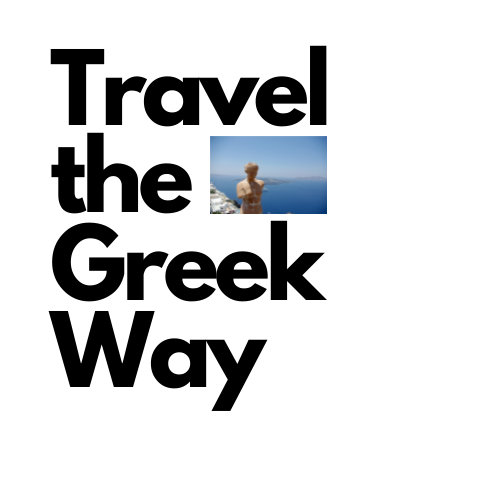The Palace of Nestor is located in the beautiful Peloponnese, a place of immense history and gorgeous villages, beaches, and high mountains. It was built on the hill of Epano Englianos overlooking the beautiful bay of Navarino in the Ionian Sea. The Palace of Nestor is north of the seafront Pylos and south of the UNESCO Temple of Apollo Epikourios and Ancient Olympia.
When I visited the Palace of Nestor, I was impressed by its size, and I was not surprised to find out that it was the main administrative center of the Kingdom of Pylos.
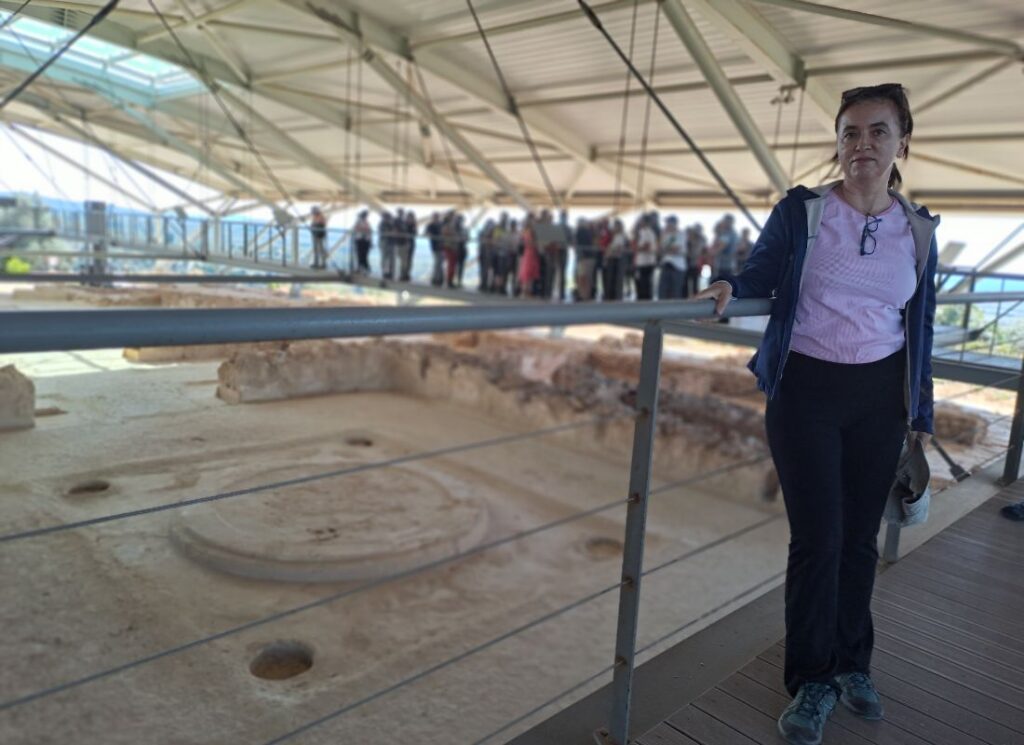
It is the best preserved Mycenean Palace in all mainland of Greece, only second in importance to the capital city of ancient Mycenae. The Mycenaean civilization (the last phase of the Bronze Age in Greece) lasted roughly between 1650 and 1060 BCΕ.
Nestor’s Palace was the largest political and economic center of the widespread Mycenean Kingdom that had control of the nearby settlements. Back then, the Palace stood in the middle of a large town with thousands of inhabitants, many slaves included.
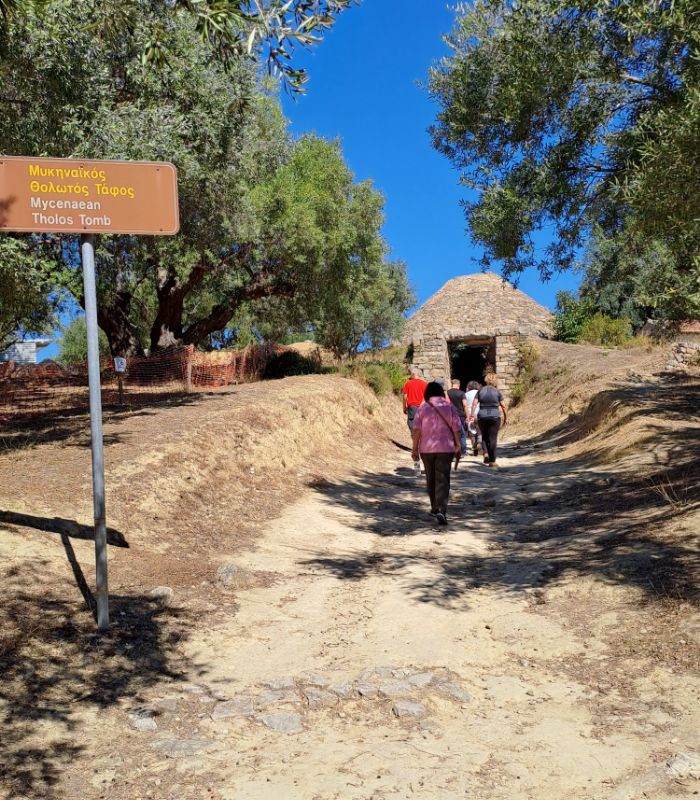
The excavated part of Nestor’s Palace is under a large metallic construction serving as a roof to protect it. When you get there and have passed through the tickets kiosk, you climb the metallic stairs up – or use the lift if you need to – and you walk around the site and see it from some height.
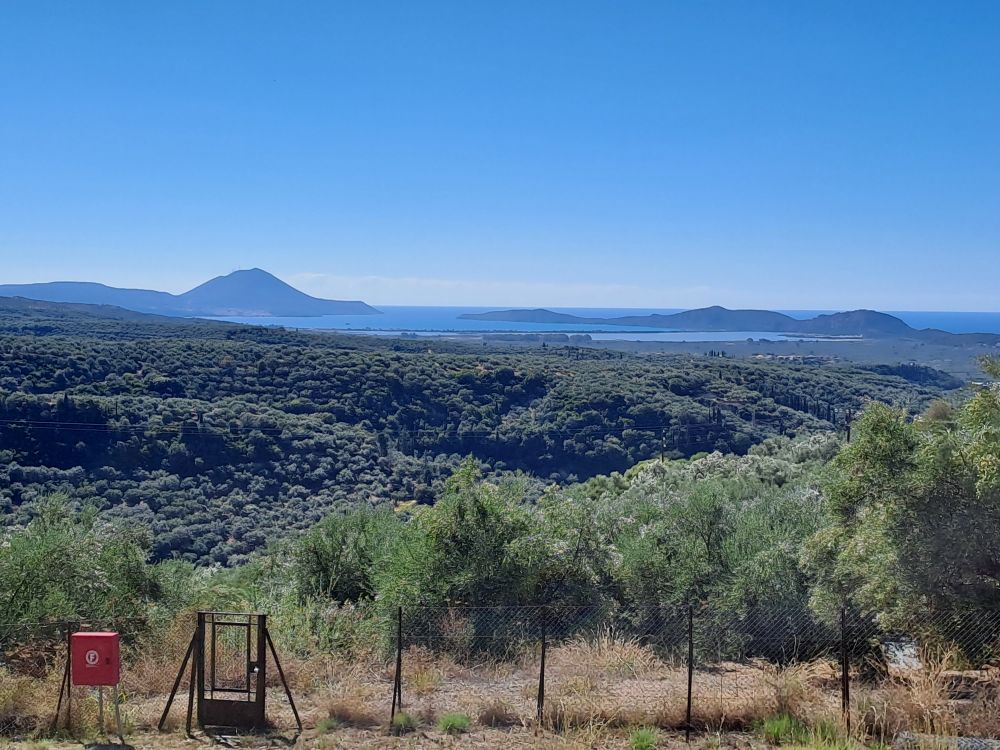
That way you get the best views of the surrounding areas and understand the palace’s floor plan without causing any damage to the site. The site is also full of information posts in both Greek and English explaining what you see.
*Some of the links in this post are affiliate links. That means I may make a commission if you click and buy. The commission comes at no additional cost to you.
My Latest Video on Nestor Palace
In this post, you will find information about the monuments in the Palace of Nestor (the palace and the nearby tomb), ticket and timetable info, how to get there, the best-guided tours in the area, and where to stay.
Exploring the Palace of Nestor
If you visit the area I recommend staying for at least 2 days, there are so many exciting things to do in Pylos and the area around the Palace.
Who was Nestor?
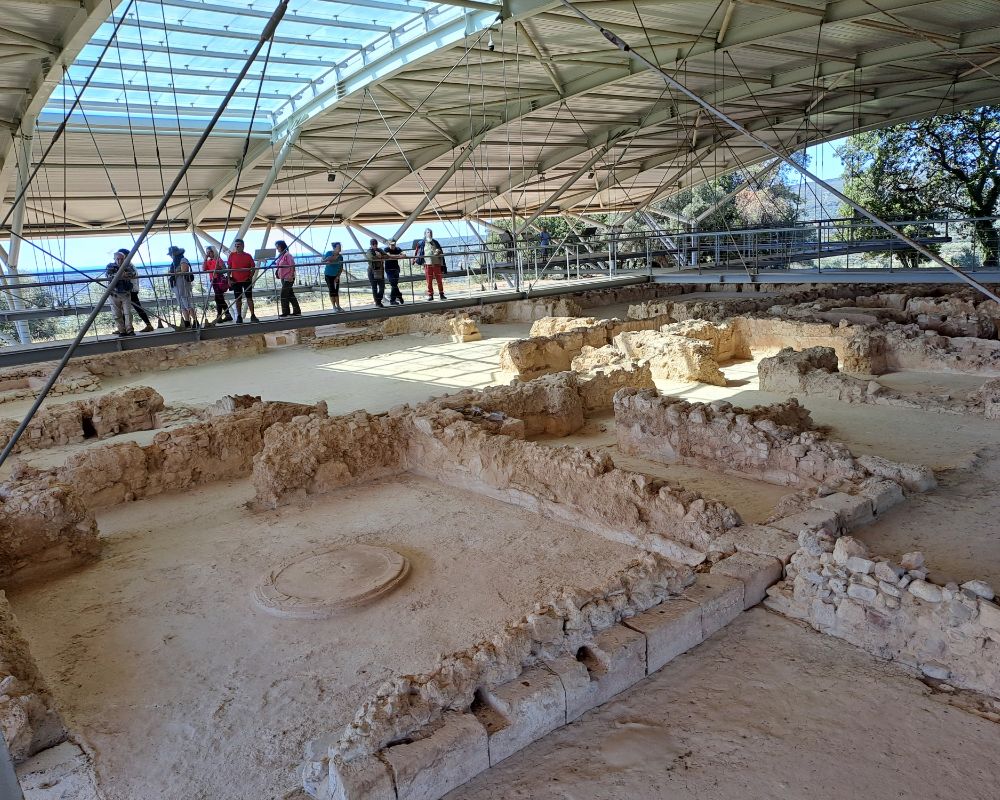
Nestor’s father was Nileas from Ancient Iolkos in Pelion and his mother was Chlorida from Orchomenos. Homer, the 8th century BCE Greek epic poet, and writer of Iliada and Odyssey, mentioned Nestor, as a wise, old, and respectable king of sandy Pylos town. King Nestor was the leader of Pylos’ army and contributed to the Trojan War with 90 ships.
he survived the war and lived a long life. We do not have any information about his death however Pausanias mentions in his Messiniaka book that his tomb was inside Pylos town.
When was the Palace of Nestor Built?
It is estimated that it was built between 1300 and 1200 BC. However, the Tholos tomb was built during the Early Mycenean period (1650 – 1400 BC) as a royal tomb and it is estimated that at least 13 persons from the Nestor’s Palace were buried.
The Greek traveler Pausanias, in the 2nd century AD during his travels in southern Peloponnese, visited Pylos and the ruins of Nestor’s Palace.
The Main Chambers of Nestor’s Palace
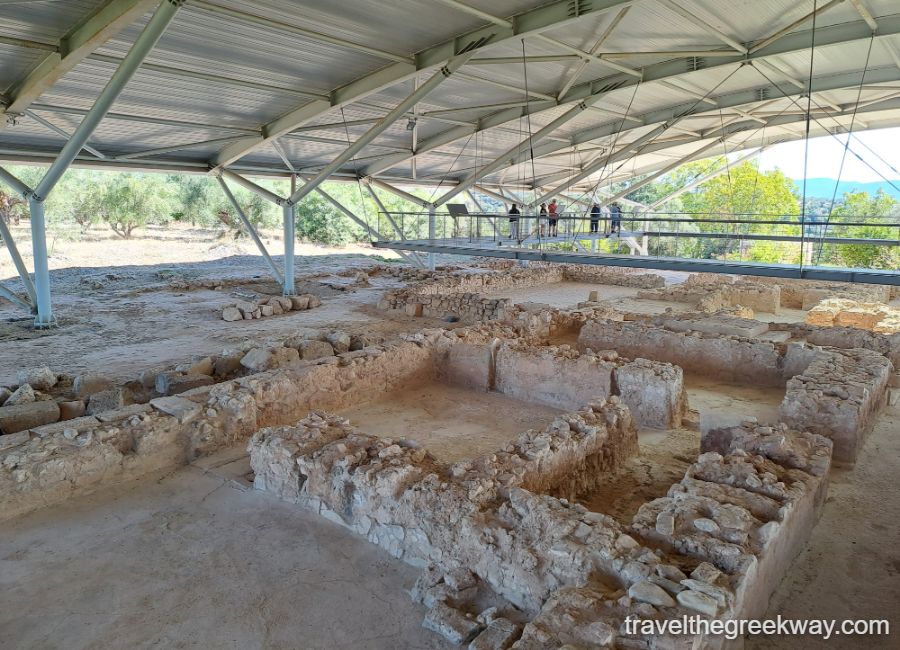
In 1939, Greek archaeologist Konstantinos Kourouniotis having already discovered two nearby Tholos Tombs, joined forces with Professor Carl Blegen of the University of Cincinnati to excavate the area. The project, sadly, came to a halt because of World War II but they commenced in 1952 and the Palace was fully excavated by 1964. The excavations and research in the area are still ongoing.
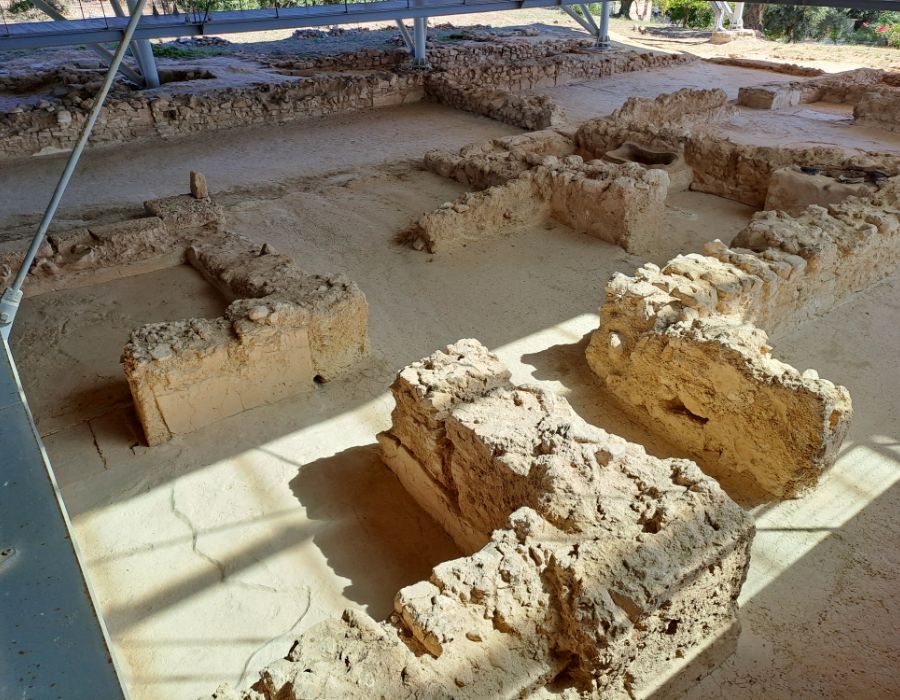
The palatial complex has 105 ground-floor apartments but the most important buildings are the central Palace or Megaron, the Queen’s chambers, the wine and oil rooms, and the archive chamber.
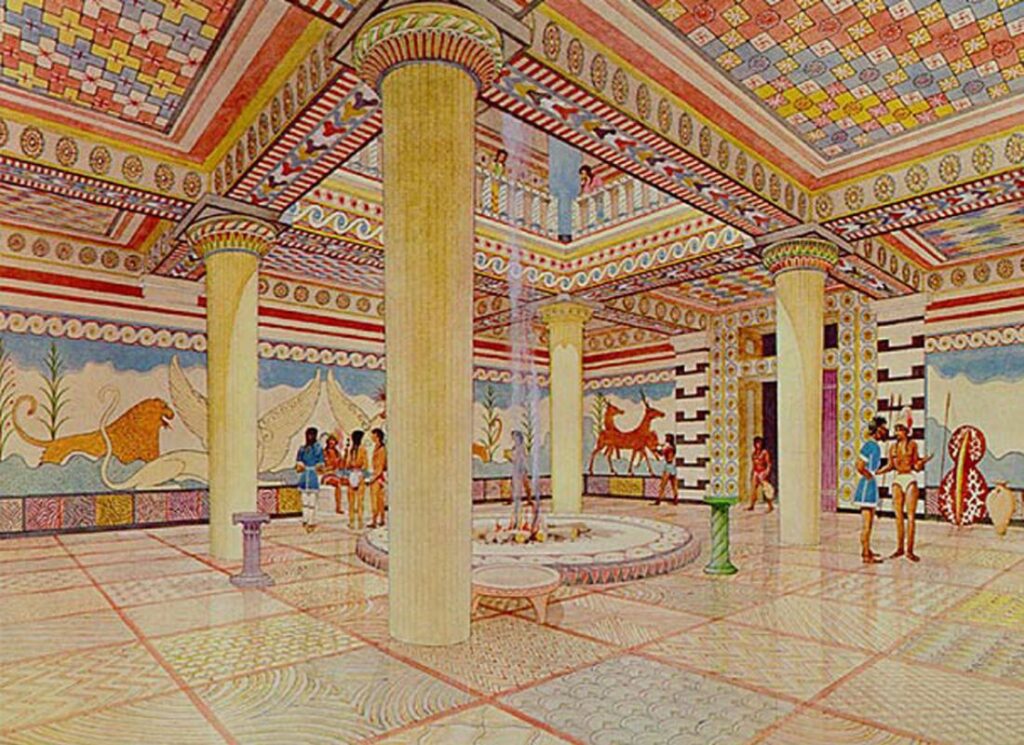
The main building used to be a 2-story high with private rooms, workshops, baths, staircases, and a drainage system. The walls, floors, and frames were covered in impressive paintings and the architecture has many influences from the Minoan civilization. The Minoan civilization flourished mainly in Crete and in particular in Heraklion with the Knossos Palace and a few other Aegean islands between 3.000 and 1450 BCE.
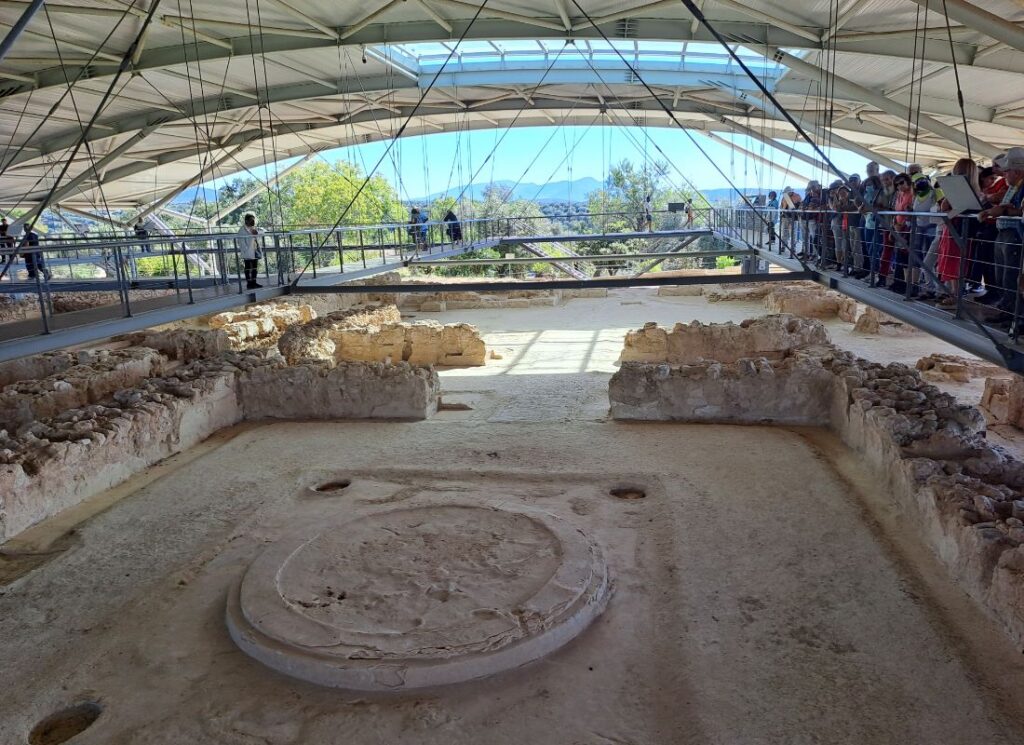
The most important part of the palace is the big rectangular Throne Chamber, easily recognized by the circular hearth that was surrounded by four ornate columns that supported a balcony.
There were paintings and timber on the walls, linear patterns on the floor, and large rooms offering a sense of grandeur in the palace.
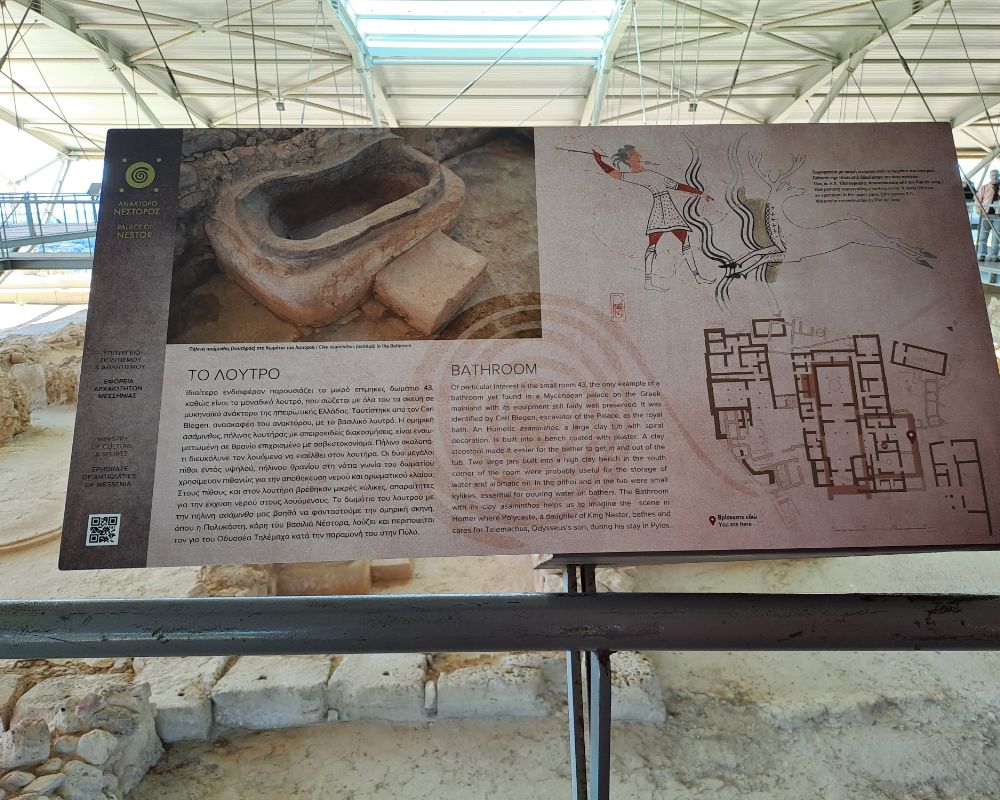
To the rear of the throne room, a whole clay bathtub has survived with a clay pot against the wall. A stand with two large jars (for oil or water?) was also found there.
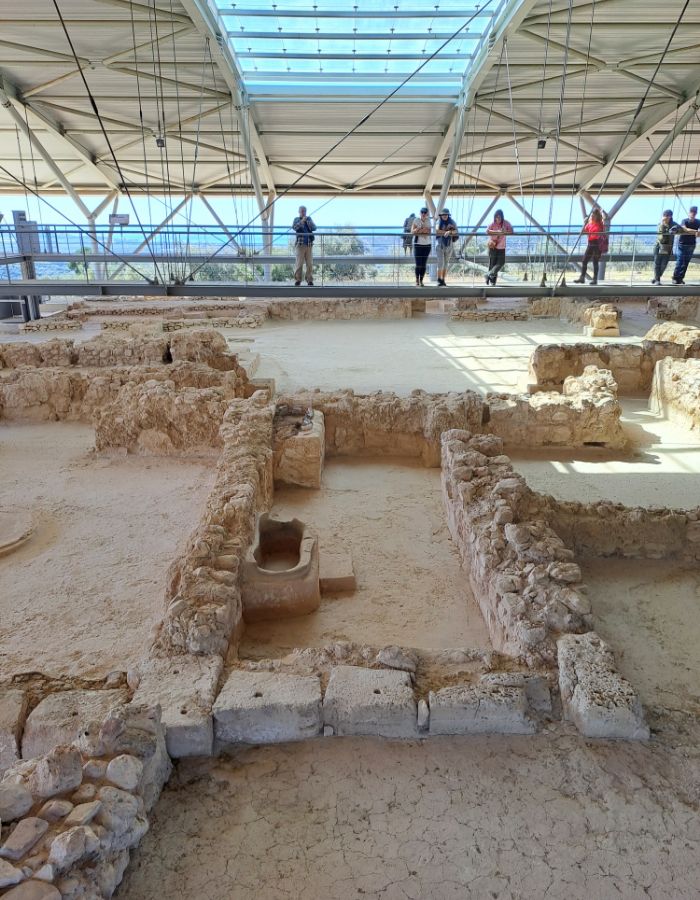
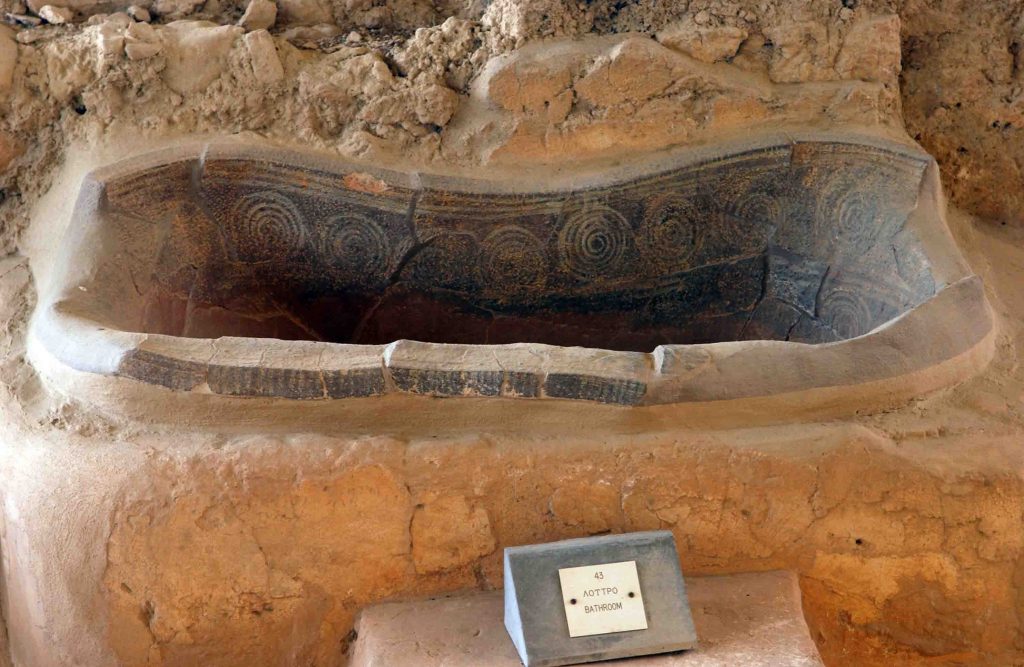
In Greek mythology, beautiful Polykaste was the youngest daughter of Nestor and Anaxibia (or Eurydice). Polykaste married Telemachus, Odysseus’ beloved son, and together they had a son, Persepolis.
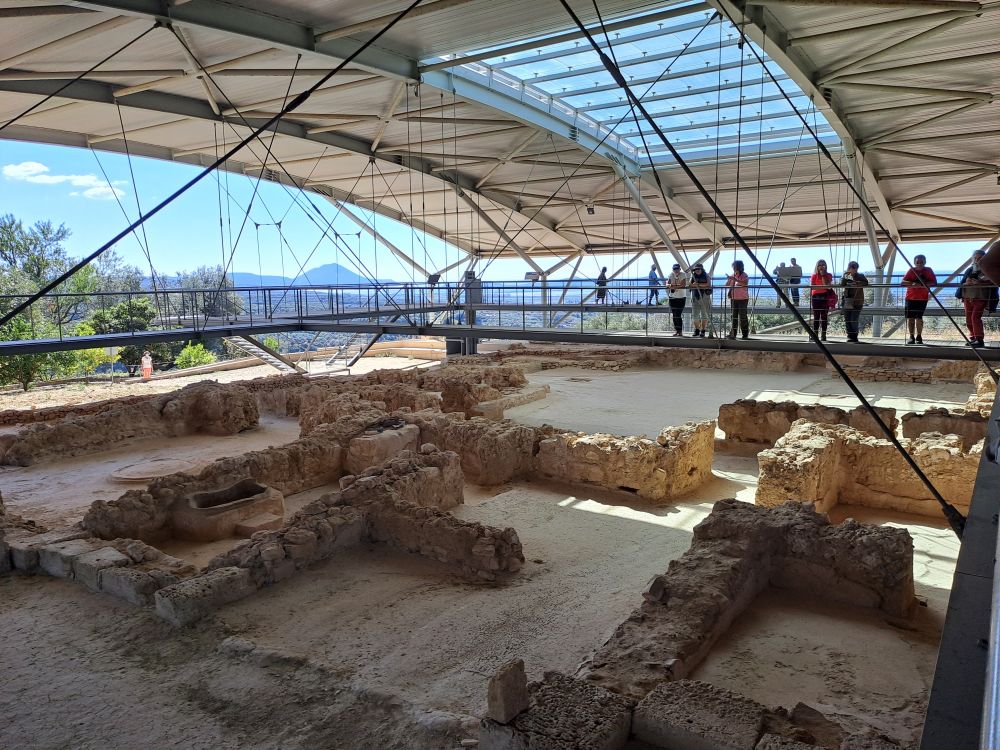
Polykaste is mentioned in the Odyssey (Rhapsody c, verses 464 ff.) as bathing Telemachus (perhaps in this very same bathtub), anointing him with oil, and dressing him in beautiful clothes, chlamys, and tunic. The excavations discovered ceramic cups used for bathing and aromatic oils still in place!
The Archives of the Palace
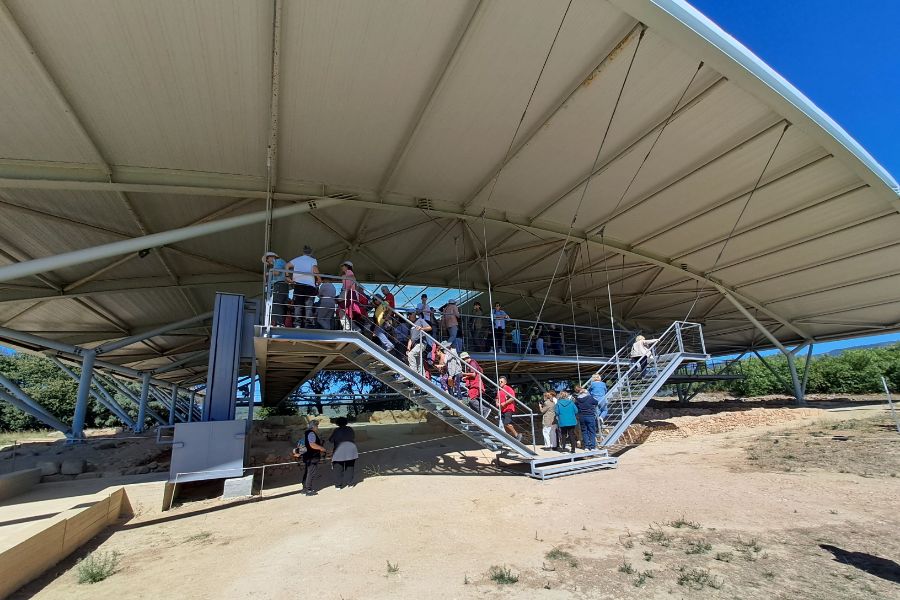
Right next to the main entrance of the central building, in a 2-room separate building, they found more than 1000 clay tablets written in Linear B. Linear B is the predecessor of the Greek language and it is the oldest script in Europe that can be read and understood. It was deciphered by Michael Ventris.
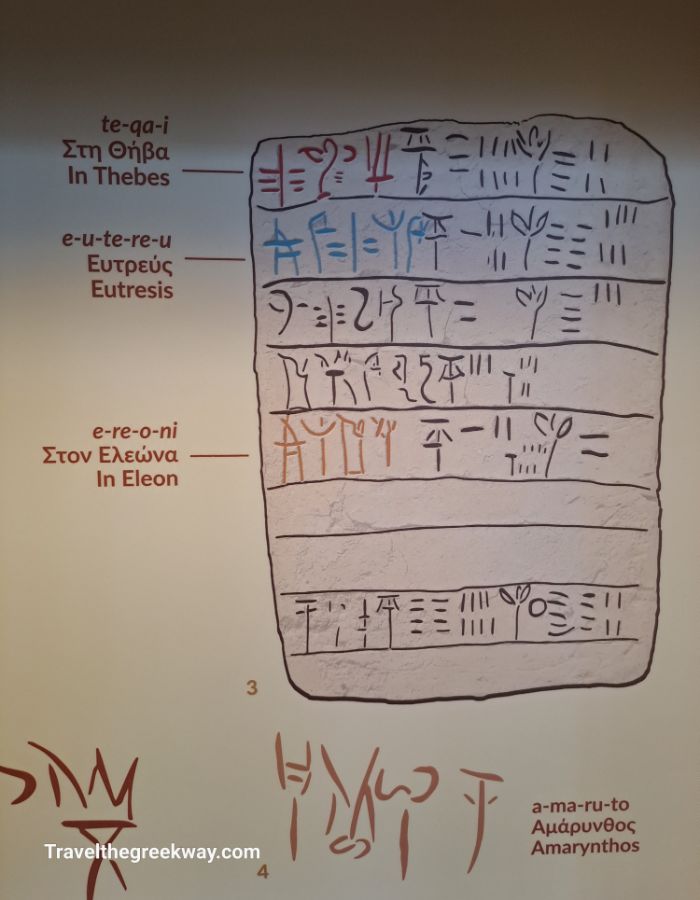
The excavations discovered as well the bench on which the clay tablets were (probably) placed after they had put the information on them. The next step would be to categorize the clay tablet and put it on the shelf it belonged.
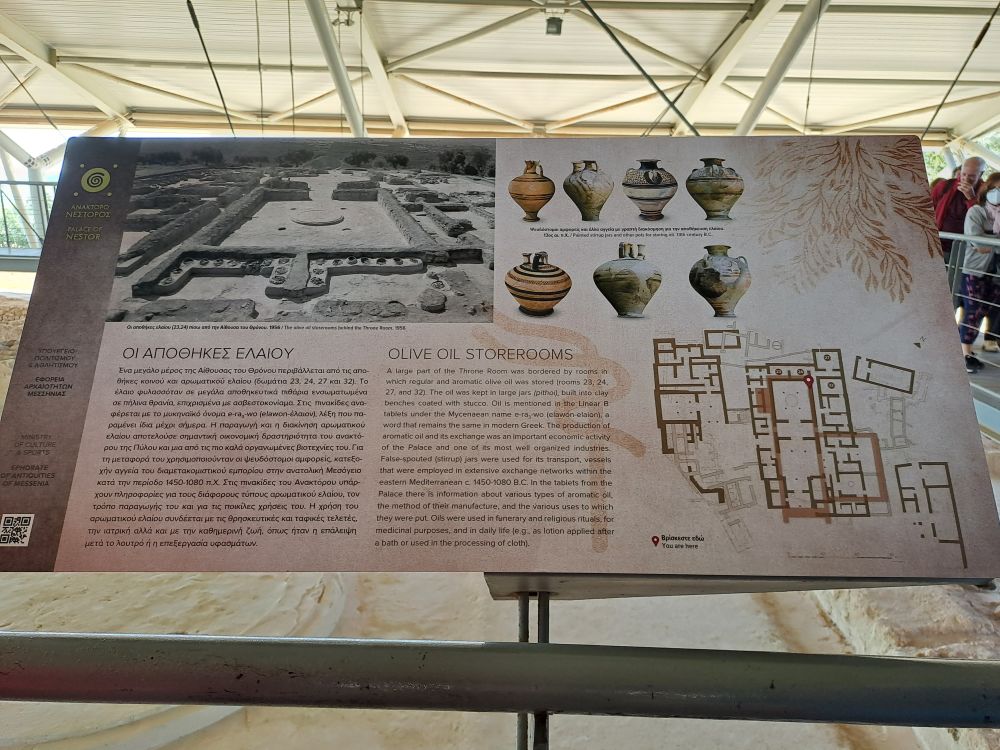
The Archive room is where the Mycenaens did their fiscal policy, kept their accountancy information, the quantities of finished goods, and raw goods, allocation of taxes and debts, the political constitution, the economy, and the religion. In other words, it was a very important department of the Palace.
The Palace was destroyed around 1200 BC by fire but you can see the impressive surviving findings in the archaeological museum of Chora and the Museum of Messinia.
After the fire, the Palace was never rebuilt and people started to abandon the area.
The Royal Tomb inside the Palace area
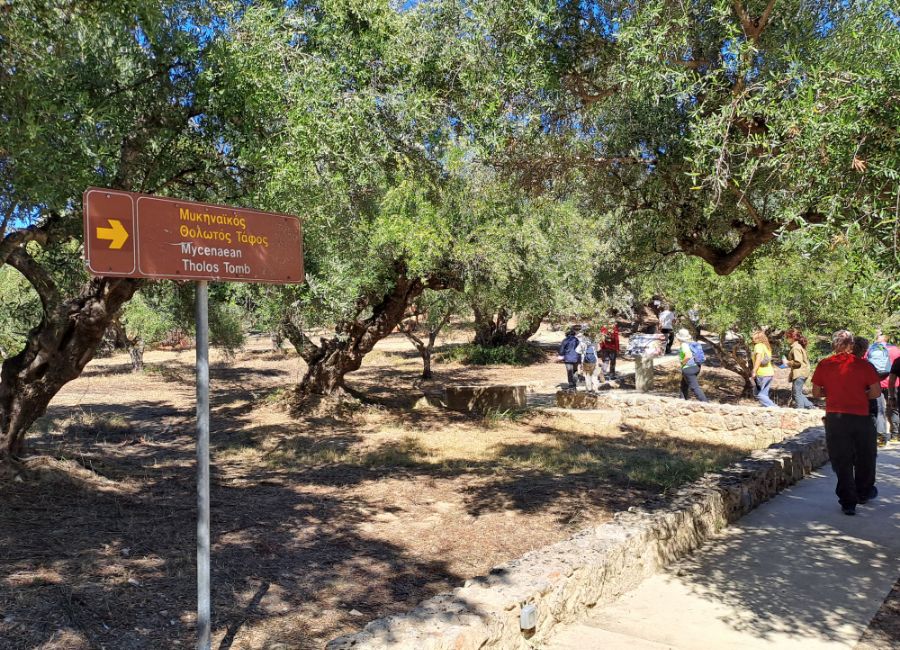
135 meters south of the Palace you will visit the royal tomb or the Tholos (beehive) tomb IV, as it is officially named by the archaeological authorities. It was excavated by Lord William Taylor in 1953 but was restored by the Greek archaeological team in 1957.
The tomb has the characteristics of all the Mycenean tombs which is usually a large room where they bury their people and a domed(beehive) roof. The tomb, after any burial, was hermetically sealed.
Although the tomb had been robbed in antiquity, the archaeologist team found many small objects such as golden rings and seals that you can see in the museums.
Entrance Ticket and Hours
The entrance fee to the Palace of Nestor is €6 per person between April and October and €3 between November and March.
There is also the €15 ticket package (valid for 3 days) that is valid for:
- The Palace of Nestor
- Archaeological Museum of Chora
- Archaeological Museum of Messenia
- Castle of Methoni
- Castle of Pylos
- Kalamata Castle
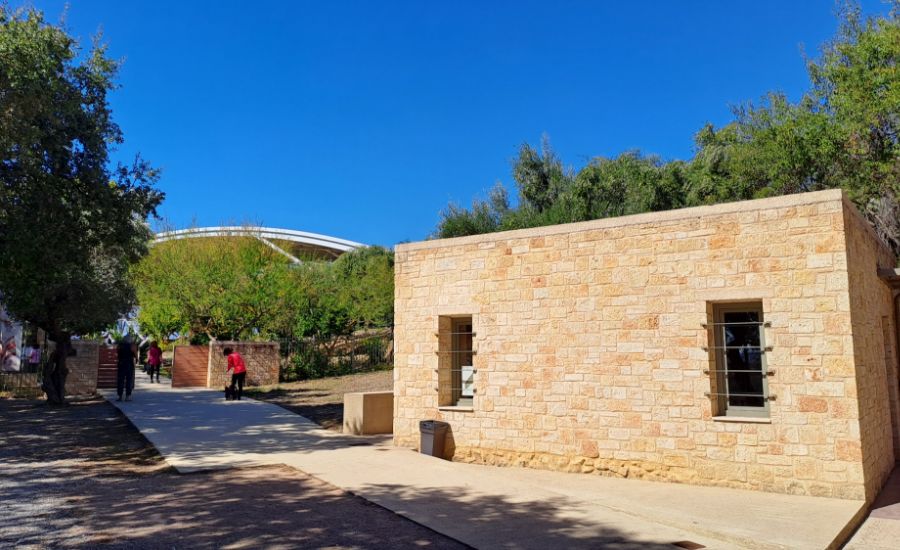
Free Entrance: From November to March, admission is free on the first Sunday of the month and on the dates of March 6th, April 18th, May 18th, the last weekend of September, and October 28th
Closed: 1 January, 25 March, 1 May, Easter Sunday, 25-26 December
Timetable: 1st November – 31 March: Every day, 08:30- 15:30
April – October: Every day, 08.00 – 20.00
Contact info for Nestor’s Palace admin: +30 27630 31437, efames@culture.gr.
Tips for Visiting Nestor’s Palace
Is the Palace Accessible?
Yes, it is. There is a lift and the visiting areas are flat.
Is there a WC inside the Site?
Yes, there is, free of charge (and for mobility-impaired people)
Is there a shop inside the Museum?
Yes, there is a small shop/information kiosk to buy coffee/snacks and small gifts including information about the decipherment of Linear B and interactive displays.
Can I drink or eat inside the Palace?
You are not allowed to eat or drink inside any archaeological site in Greece, only water is allowed to carry around. However, there is a nice area in the yard across from the kiosk with tables where you can have a coffee and enjoy the view.
How much time do I need to explore the Palace of Nestor?
If you are visiting without a licensed guide, you will need less than an hour to explore it.
Should I have only cash with me?
No, you shouldn’t. You can use either cash or a debit/credit card to pay for your entrance (not American Express).
Where best to stay near Nestor’s Palace
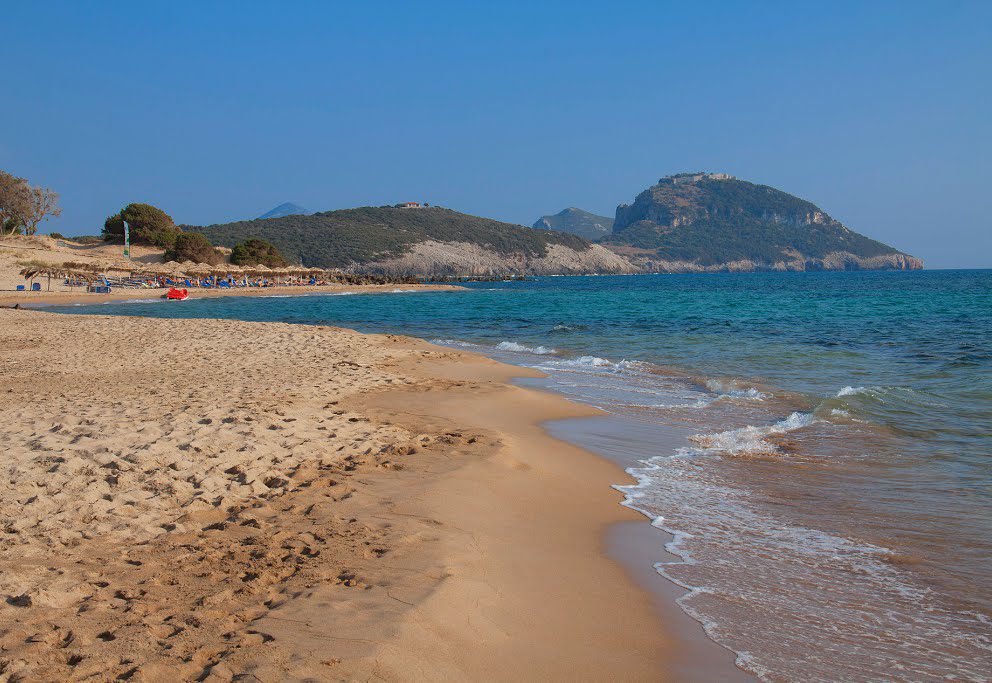
8 km west of the Palace of Nestor, there is the long and sandy Romanos beach and village facing the Ionian Sea. It is a popular area during summer, as the beach is gorgeous and the waters are crystal clear. It is very close to the other stunning beaches, Voidokilia, and the Gialova Lagoon.
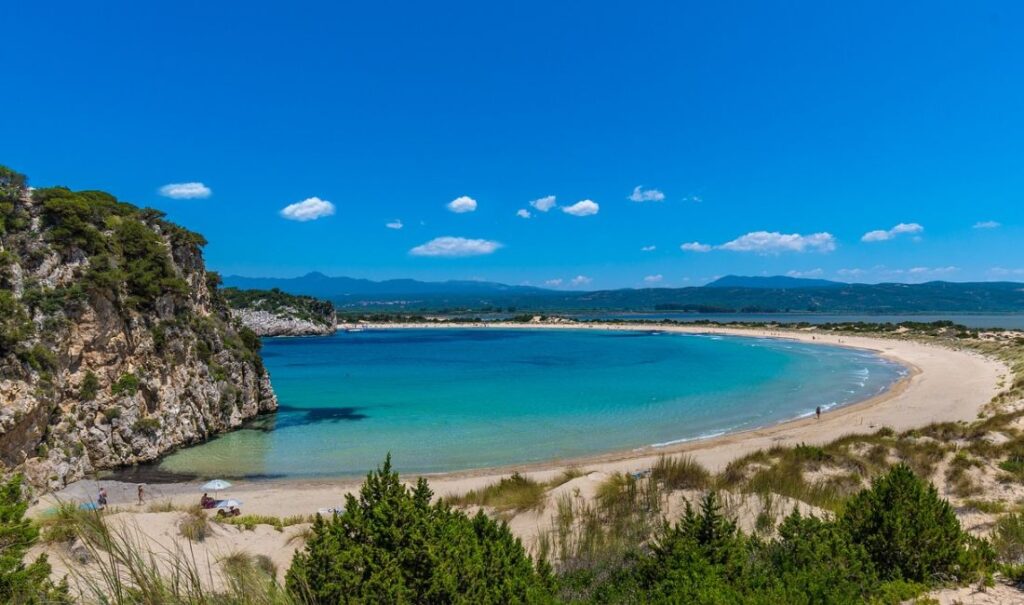
The best resort in the area is The Westin Resort, Costa Navarino, ideal for a family or couples. If you prefer a more homey feeling then you will love Vasiliki Residence (self-catering) in beautiful Pylos.
How can I get to the Palace of Nestor?
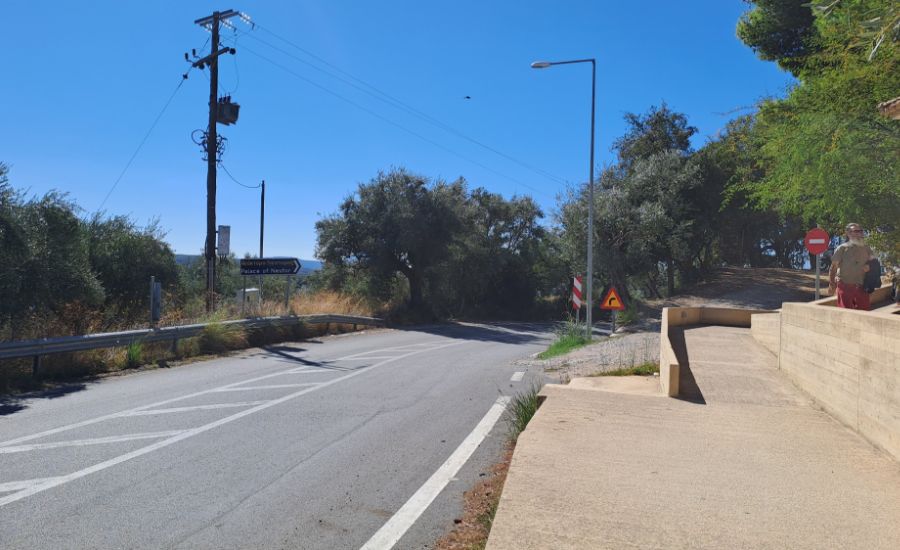
The Palace of Nestor is located in the southwestern Peloponnese, near some of the most beautiful landscapes of the area: Pylos, Voidokilia, Methoni, Gialova, and the Bay of Navarino.
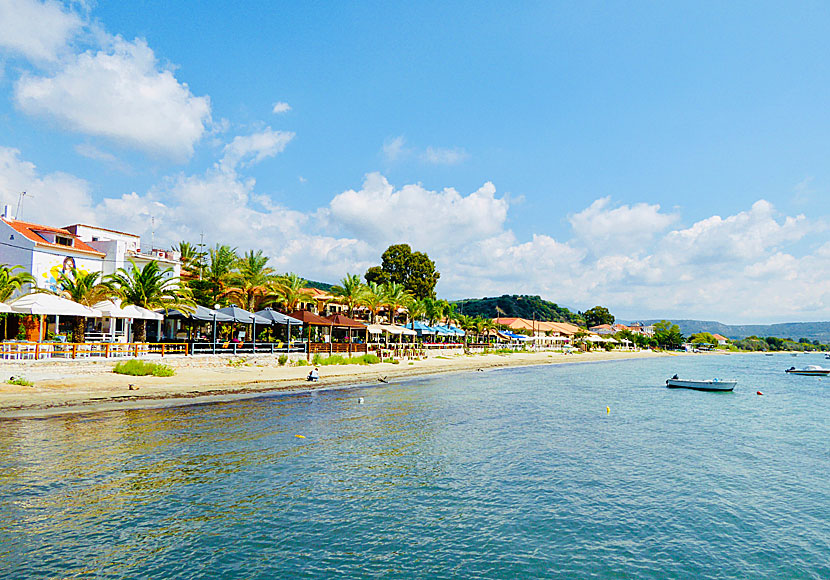
It is located 4km south of Chora on the road from Gialova, and there is a parking area at the entrance to the archaeological site.
If you are traveling from Athens, the distance is 283 km (3.5 hours with a car). You can travel by public bus KTEL but as the route from Athens contains several spectacular sites such as Mycenae, Epidaurus, Nafplion, Mystras, and Messene, I highly recommend you rent a car. That way you will be able to explore the Peloponnese so much better.
Mycenean Cities in Greece
Besides Mycenae in Argolis and the Palace of Nestor in Pylos, other significant Mycenean monuments can be visited in:
- Palatial Structure of Tiryns near Nafplion
- Iolkos in Pelion Peninsula
- Thebes
- Orchomenos
- Athens in Lavrio, Thorikos (ancient theater with 5 domed Mycenean tombs and ruins of Acropolis)
- Kanakia on Salamina island
- Palatial Structure in Argos
Recommended Tours near Pylos
There is an abundance of outdoor activities to do near the Palace of Nestor. Some of my favorite ones are:
Hike the Gulf of Navarino (Gialova Lagoon)
Tasting Kalamata – An Introduction To Food Treasures
Hike Polilimnio waterfalls
Plan My Trip to Greece
Do you need a custom travel itinerary or a transfer within Greece? Are you traveling solo, with your family or friends and need a tailor-made multi-day tour or a transfer?
If yes, please visit my dedicated Plan My Trip Page for a free itinerary!
Did you visit the Palace of Nestor? Let me know what you think about visiting the Palace of Nestor in the comments, I’d love to hear whether I managed to get it onto your bucket list! Till next time, Evgenia❤️
Essential Travel Info for Greece
- ‘Hello’ and ‘Thank You’ in Greek: “Ya sou” and “Efharisto”
- Booking.com: I use Booking.com because I can get the best deals on hotels and apartments, free cancellations, and great prices!
- All-Inclusive Resorts in Greece
- FerryScanner to book ferries to the Greek Islands
- Rent an Affordable Car in Greece
- Athens Metro Website (timetables and ticket info)
- Map of Athens Metro
- Trains (Hellenic Train)
- Public Buses KTEL
- Get Your Guide: For all your day or multi-day tours and city guide needs, I use Get Your Guide
- Emergency Numbers Anywhere in Greece: AMBULANCE 166 – FIRE 199 – POLICE 100– EMERGENCY NUMBER 112
